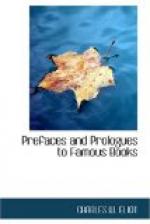In our opinion a most novel book might be written upon the employment of the grotesque in the arts. One might point out the powerful effects the moderns have obtained from that fruitful type, upon which narrow-minded criticism continues to wage war even in our own day. It may be that we shall be led by our subject to call attention in passing to some features of this vast picture. We will simply say here that, as a means of contrast with the sublime, the grotesque is, in our view, the richest source that nature can offer art. Rubens so understood it, doubtless, when it pleased him to introduce the hideous features of a court dwarf amid his exhibitions of royal magnificence, coronations and splendid ceremonial. The universal beauty which the ancients solemnly laid upon everything, is not without monotony; the same impression repeated again and again may prove fatiguing at last. Sublime upon sublime scarcely presents a contrast, and we need a little rest from everything, even the beautiful. On the other hand, the grotesque seems to be a halting-place, a mean term, a starting-point whence one rises toward the beautiful with a fresher and keener perception. The salamander gives relief to the water-sprite; the gnome heightens the charm of the sylph.
And it would be true also to say that contact with the abnormal has imparted to the modern sublime a something purer, grander, more sublime, in short, than the beautiful of the ancients; and that is as it should be. When art is consistent with itself, it guides everything more surely to its goal. If the Homeric Elysium is a long, long way from the ethereal charm, the angelic pleasureableness of Milton’s Paradise, it is because under Eden there is a hell far more terrible than the heathen Tartarus. Do you think that Francesca da Rimini and Beatrice would be so enchanting in a poet who should not confine us in the Tower of Hunger and compel us to share Ugolino’s revolting repast? Dante would have less charm, if he had less power. Have the fleshly naiads, the muscular Tritons, the wanton Zephyrs, the diaphanous transparency of our water-sprites and sylphs? Is it not because the modern imagination does not fear to picture the ghastly forms of vampires, ogres, ghouls, snake-charmers and jinns prowling about graveyards, that it can give to its fairies that incorporeal shape, that purity of essence, of which the heathen nymphs fall so far short? The antique Venus is beautiful, admirable, no doubt; but what has imparted to Jean Goujon’s faces that weird, tender, ethereal delicacy? What has given them that unfamiliar suggestion of life and grandeur, if not the proximity of the rough and powerful sculptures of the Middle Ages?




